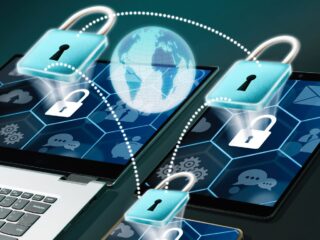
The Digital revolution has transformed businesses of all sizes, as well as corporations, organizations, and even governments. They now heavily depend on computerized systems to manage daily operations, making cybersecurity a top priority. Protecting data from online attacks and unauthorized access has become imperative. As technology evolves, cybersecurity trends also evolve. Data breaches, ransomware, and hacks have become commonplace. Companies strive to integrate security best practices but often work with outdated technologies.
Cybersecurity Trends 2023-2024
#1 Responsibility And Zero-Trust Programs
According to Gartner, an astonishing 50% of cybersecurity leaders are expected to change jobs due to the stress associated with their professional responsibilities by 2025. Additionally, by 2026, the implementation of a mature zero-trust program is projected to reach 10% in large organizations, compared to the current 1%. The zero-trust model operates on the principle that complex networks are constantly vulnerable to both external and internal threats. In this model, data access is restricted at all times by meticulously examining every connection. Of course, this philosophy should be combined with other complementary security strategies, both preventive and offensive in nature.
#2 Collaboration Tool – Target for Hackers
During the two years of the pandemic, cybercriminals have shifted their focus from social networks to communication tools, which have become widely accessible. Oliver Cronk, Chief IT Architect at Tanium, emphasizes the significance of these tools in enabling new work methods and containing substantial sensitive data.
Rather than seeking technical vulnerabilities in these tools, hackers are opting to exploit users by impersonating them. This exploitation extends beyond the platforms themselves and can be observed through Zoom-based phishing attacks circulating via emails, text messages, and social media, all aimed at stealing valuable credentials.
#3 VPN is Gaining Momentum
Among all threat prevention strategies, one of the easiest to use and accessible to organizations of all sizes is VPN. Plus, this is a multi-platform software that allows you to protect all smart devices from phishing, DDoS attacks, viruses, data interception, and other risks. You can even use a VPN for Fire TV or a VPN for your router. Also, keep in mind that VPN for Firestick serves not only as protection but also as a tool for bypassing geographic restrictions and protecting your digital identity. Overall: VPN is a simple, powerful, and multifunctional tool that will continue to be in demand.
#4 Insider Threats
Data breaches often occur due to human error, making it one of the primary causes. When a mistake or intentional loophole arises, it can potentially compromise an entire organization, resulting in the theft of millions of data records.

Verizon’s report on data breaches, unveils strategic insights into cybersecurity trends, revealing that employees directly or indirectly contributed to about 34 percent of total attacks. Therefore, it is imperative to raise awareness within the premises and take every possible measure to safeguard data.
#5 Generative AI
AI is rapidly becoming more sophisticated, which leads to an increase in smart and sophisticated AI-driven attacks. These attacks include deepfake social engineering attempts and automated malware, which cleverly adapt to avoid detection. Additionally, AI aids in detecting, evading, and neutralizing threats through real-time anomaly detection, smart authentication, and automated incident response. If we view cyber attack and defense in 2024 as a game of chess, AI plays the role of queen, capable of creating powerful strategic advantages for the most skilled players.
#6 Multi-Factor Authentication
Multi-factor authentication (MFA) enhances security by requiring users to provide multiple forms of authentication before accessing an account. This additional layer of security safeguards against cyberattacks, as attackers need access to multiple pieces of information. If you also use VPN Chrome, then collecting all the data shards is almost impossible. Organizations should secure all accounts with MFA to decrease the risk of unauthorized access.

Cybersecurity increasingly relies on automation. Automated security processes expedite threat detection and response, improving threat detection accuracy. Automation also reduces reliance on manual processes, which consume time and are prone to human error.
#7 The Standardization of Cyber Insurance
Providers will standardize cyber insurance across the board, moving away from individual brokers setting their own requirements and checklists. In the past three years, cyber insurance has matured significantly, adapting to the ever-diversifying and evolving landscape of AI, global conflict, and 5G connectivity. Now, insurance policies and carriers widely incorporate categories such as “Acts of War.” However, different cyber insurance carriers assess risk differently, despite threat actors being indifferent towards the size of the targeted organization. By 2024, expect a shift towards a core control or framework-based approach to cyber insurance. This evolution will enable providers to standardize risk reduction and liability mitigation when it comes to cyber policies against all types of threats.
Conclusion
As cyber threats increase in number and ingenuity, so do efforts to combat them. Must have – endpoint security in 2023 and cloud security solutions, will remain relevant next year. Companies should also pay attention to incident response planning so that if a vulnerability is discovered, the team can effectively resist hackers. In general, the better you understand the cybersecurity niche and its trends, the more effectively you can create a security system.





